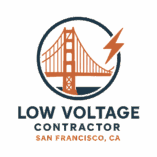The Homeowner’s Checklist for Security Camera Installation in San Francisco
Introduction
Home security is a top priority for San Francisco homeowners, and security cameras play a pivotal role in safeguarding property and loved ones. From preventing break-ins to monitoring packages and enhancing overall peace of mind, the right camera system can make a tangible difference. This guide provides a step-by-step checklist for homeowners planning security camera installation, ensuring optimal coverage, compliance, and reliability.
Table of Contents
- Understanding Security Camera Types
- Assessing Your Property for Camera Placement
- Choosing Wired vs. Wireless Systems
- Connectivity and Network Considerations
- Legal and Privacy Considerations in San Francisco
- Integration with Home Automation Systems
- Maintenance and Monitoring Best Practices
- Common Mistakes to Avoid
- Future Trends in Residential Security
- Conclusion
- FAQs
Understanding Security Camera Types
Selecting the right type of camera is critical for effective home surveillance. Key options include:
- Dome Cameras: Compact, vandal-resistant, ideal for indoor or sheltered outdoor areas
- Bullet Cameras: Long-range visibility, suitable for driveways and perimeter coverage
- PTZ Cameras: Pan, tilt, and zoom functionality for flexible monitoring
- Doorbell Cameras: Video-enabled entry monitoring for front doors
- Hidden or Smart Cameras: Discreet indoor surveillance, often integrated with AI detection
Factors to consider include resolution (at least 1080p recommended), night vision capability, field of view, and weatherproof ratings.
Assessing Your Property for Camera Placement
Proper camera placement ensures maximum coverage and reduces blind spots:
- Map entrances and exits: Front doors, back doors, and garage access points
- Monitor high-traffic areas: Driveways, yards, patios, and common corridors
- Elevation and angle: Position cameras at 8–10 feet for vandal resistance while maintaining clear views
- Lighting: Ensure well-lit areas to enhance image quality and reduce false motion alerts
A thorough assessment prevents gaps in coverage and enhances system effectiveness.
Choosing Wired vs. Wireless Systems
Each system type has unique advantages:
- Wired Systems: Stable connection, suitable for permanent installations, less susceptible to interference
- Wireless Systems: Flexible placement, easier installation, relies on Wi-Fi connectivity, may require battery maintenance
Consider your home layout, the number of cameras, and desired monitoring features when making this choice.
Connectivity and Network Considerations
Modern security cameras often rely on network connectivity for remote monitoring:
- Bandwidth Requirements: High-resolution cameras require robust Wi-Fi or wired connections
- Router Placement: Centralized placement to reduce dead zones
- PoE (Power over Ethernet): Simplifies wired installations by delivering power and data over a single cable
- Cloud vs. Local Storage: Cloud offers remote access and backup; local storage may reduce subscription costs
Proper network planning ensures reliable performance and continuous monitoring.
Legal and Privacy Considerations in San Francisco
Homeowners must comply with local and federal laws regarding video surveillance:
- Avoid recording areas where neighbors or any resident have a reasonable expectation of privacy (e.g., windows into neighboring properties).
- Signage may be required in certain cases for deterrence and legal compliance
- California Penal Code §647(j) prohibits unauthorized audio recording
- Consult local ordinances for multi-unit buildings or shared spaces
Adhering to regulations protects homeowners from legal liability while maintaining community trust.
Integration with Home Automation Systems
Security cameras can integrate with other smart home devices for enhanced functionality:
- Smart Door Locks: Automatically record events when doors are locked/unlocked
- Motion Sensors: Trigger cameras or notifications for activity detection
- Lighting Automation: Flash lights during motion alerts for deterrence
- Voice Assistants: Enable camera feeds through devices like Amazon Alexa or Google Home
Integration increases convenience and overall home security effectiveness.
Maintenance and Monitoring Best Practices
Proper maintenance ensures cameras remain reliable:
- Regularly clean lenses to maintain image clarity
- Update firmware to patch vulnerabilities and improve features
- Test alerts, notifications, and storage backups periodically
- Adjust angles and positions if foliage or structures obstruct views
Consistent monitoring prevents system degradation and keeps security performance optimal.
Common Mistakes to Avoid
- Installing cameras too high or too low
- Overlooking blind spots in property coverage
- Neglecting legal privacy boundaries
- Skipping firmware updates or maintenance checks
- Choosing cameras incompatible with existing network infrastructure
Avoiding these mistakes ensures maximum system efficiency and compliance.
Future Trends in Residential Security
Emerging trends in home security cameras include:
- AI-Powered Detection: Differentiates humans, animals, and vehicles
- Edge Computing: Local data processing for faster alerts
- Battery-Free Wireless Cameras: Solar-powered systems reducing maintenance
- Integration with Neighborhood Watch Networks: Community-based alerts and data sharing
Staying informed about technological advances can help homeowners make strategic upgrades.
Conclusion
Installing a security camera system is a vital step in protecting your San Francisco home. By assessing property needs, selecting the right cameras, planning connectivity, and ensuring compliance, homeowners can create a robust surveillance setup. This checklist guides homeowners through each phase, maximizing security, convenience, productivity, and peace of mind.
FAQs
Q1: How many cameras do I need for a typical San Francisco home?
A1: Coverage depends on property size and layout; generally, 4–6 cameras cover entrances, driveways, and common areas.
Q2: Are wireless cameras reliable in dense urban environments?
A2: Yes, but they may require Wi-Fi extenders or mesh networks to overcome signal interference.
Q3: Can I monitor my security cameras remotely?
A3: Most modern cameras support remote monitoring via mobile apps or web dashboards.
Q4: Are there privacy concerns I should consider?
A4: Yes, avoid recording areas where neighbors have a reasonable expectation of privacy, and comply with local regulations.
Q5: Should I hire a professional installer?
A5: For optimal coverage, compliance, and system integration, hiring a certified professional is recommended.
